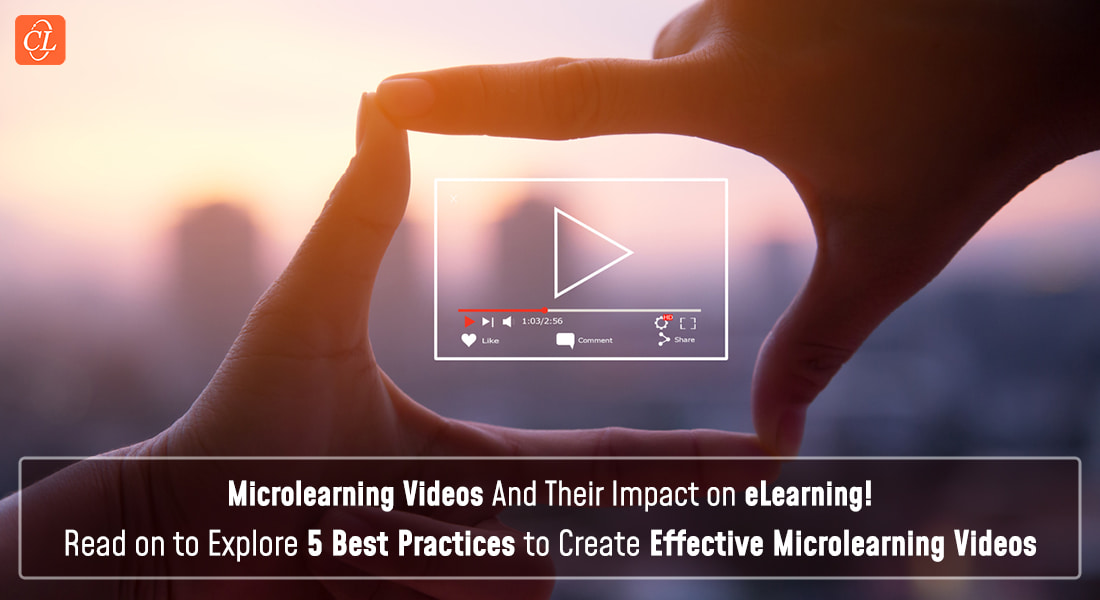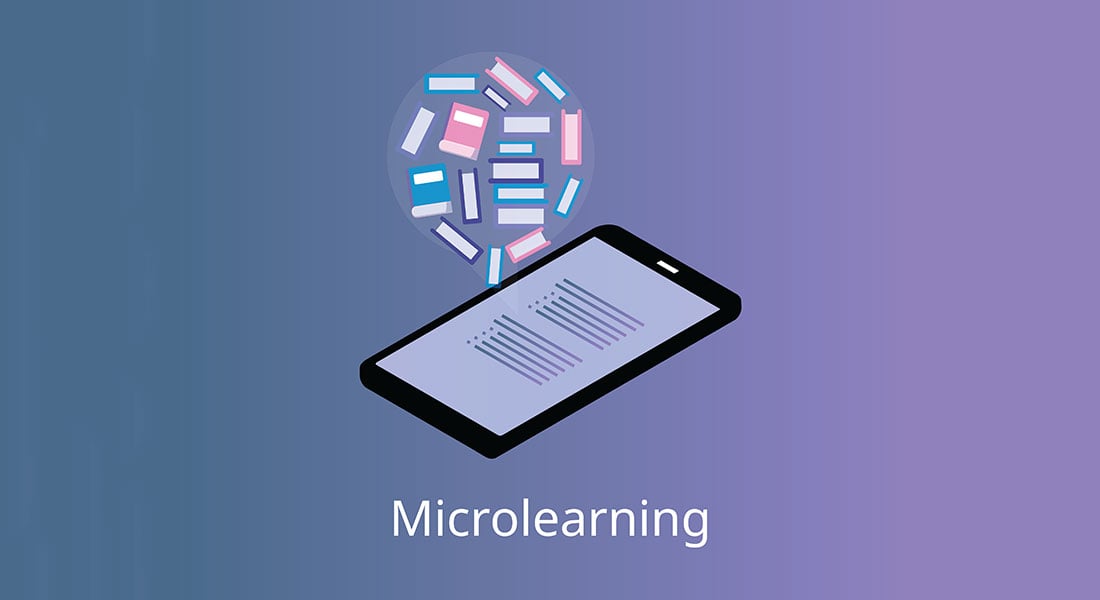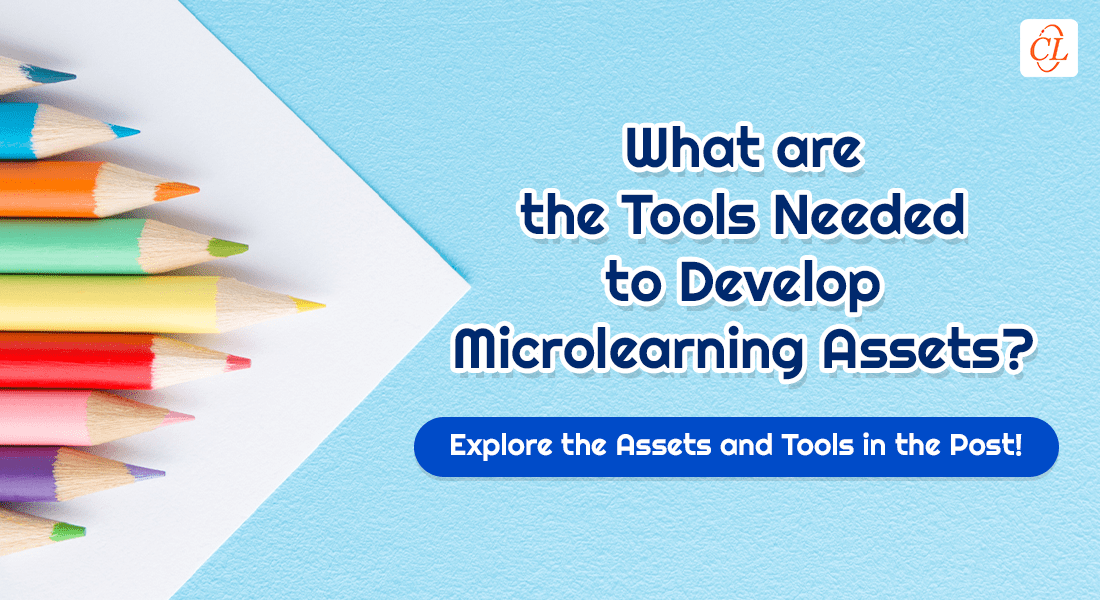5 Best Practices for Creating Microlearning Videos

You have heard of the adage, “less is more” and how the trend towards minimalism has caught the attention of the current generation. Who hasn’t taken to YouTube to find a video that trains you to cook a certain recipe, create a new hairstyle, or fold a bow tie? Microlearning videos are quick videos typically lasting anywhere between 3 to 5 minutes to demonstrate new knowledge or skills in an engaging way.
Are You Wondering How You Can Create Microlearning Videos?
Here are a few best practices:
- Focused objectives
- Solution based content
- Assessments
- Worksheets
- Different content modalities
Read on to discover more.
Microlearning Videos: Defining It with An Example
What is microlearning you might ask? Well, microlearning is a learning strategy that uses bite-sized content to deliver information where and when the learner needs it. A microlearning video typically lasts three to five minutes and helps you save time and money as well as the cost and effort of production as you don’t have to use extensive time and content to create online courses. The developers of microlearning videos create content in such a way that it is concise and easy to digest.
A case in point, Global Learning Systems uses live-action, one-minute microlearning videos to conduct security awareness training using a real-world scenario. They believe microlearning content works because it is relevant, relatable, and retainable. You find an engaging video on their website that’s a little over a minute, and it’s aptly titled ‘SecureSnippets’. In the video, you witness a man sitting in a coffee shop at this laptop and conducting some sort of financial transaction. You soon notice a woman sitting nearby using the same Wi-Fi to hack into his account and steal his private information to indulge in retail therapy through his hard-earned cash. The video is only about a minute long, but it has impact and clarity warning tech-savvy folk to protect their online data.
Microlearning videos have many benefits specifically for the corporate world to improve employee performance. Let’s dive straight into it and find out the best practices of microlearning videos and how you can use them to enhance the performance of the learners in your workplace.
Find out what microlearning is and what it isn’t here
5 Best Practices for Creating Microlearning Videos
So, what are these five best practices of microlearning videos. Let’s learn how to enhance and build successful employee training programs in your organization using microlearning videos.
1. Focused objective
A basic tenet of microlearning is that it is based on one learning objective. And successful microlearning videos are designed around a focused objective to deliver the just in time (JIT) learning that can help your learners grasp information quickly right when they need it the most. This type of video does away with the fluff, very much like a butcher trimming off the fat from a piece of meat, and it gets straight to the point in the three-to-five-minute window of learning opportunity.
2. Solution based content
Each microlearning video is focused on a single learning objective and is created so that the employee can understand a process, learn about a new concept, or refresh practicing a skill that they might have been using at work for years. Microlearning videos must demonstrate a certain output which the employee can use in their workplace right away. It should not be said that microlearning videos are a bit of light-hearted fun that has no direct impact on the job, or that makes no difference in the employees’ work life and performance.
3. Assessments
Short online quizzes and assessments are very much like the high school pop quiz. You can use assessments as an add on to your microlearning video. They are a fantastic way to help you figure out if your learners are understanding the content and can reach the learning goal that you have set for them.
4. Worksheets
These are another add on to your microlearning video. They help make it easier for your learners to process the content with tips and examples that keep pointing them to the main learning objective. You need to provide worksheets, templates or scripts that support their learning via the microlearning video.
5. Different content modalities
No person is the same and this goes for your learners too. Every learner has a unique style to work through and hold on to new content. Therefore, when you create a microlearning video you need to make sure you give your learners different content formats through which they can learn. A few examples of microlearning video modalities are short transcript paragraphs, quick audio clips and links that the learner can download alongside the microlearning video and gain supplementary but essential information.
Microlearning Videos: Use Cases
As you have read about five best practices that you can use to create your microlearning video and make an impact, let’s also discover where you can use this popular learning approach. You can use the microlearning video to demonstrate a process at work. You must divide your lesson into these broad sections: an intro, the body, and the outro just like you would write an article. Also, you must divide your video’s key learning points or questions with placeholder time stamps to help your learners reach the place they are most interested in no time.
Wrapping it up
Microlearning videos are changing the way the world learns. And the best type of content for microlearning is videos, of course, such as Tik Tok videos, Instagram reels, and YouTube shorts. You can also use microlearning videos to spruce up your content marketing plan. Microlearning is being used by hundreds of learning and development experts to enhance the performance of global corporate employees.
If you want to learn more about how microlearning can make a difference in your organization, then do access our free webinar recording that helps you gain in depth insights into microlearning and where it fits into your learning strategy. Click on the link below to download it.




